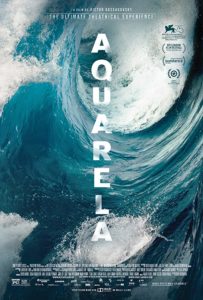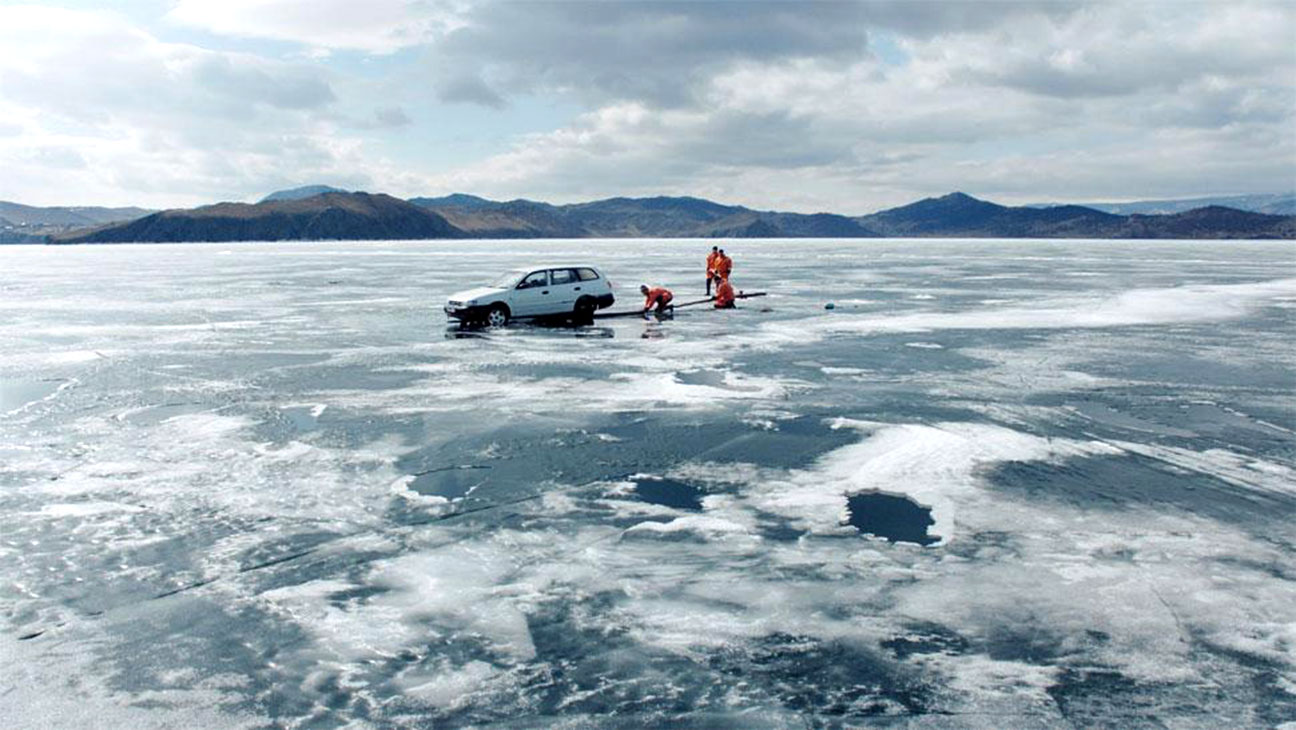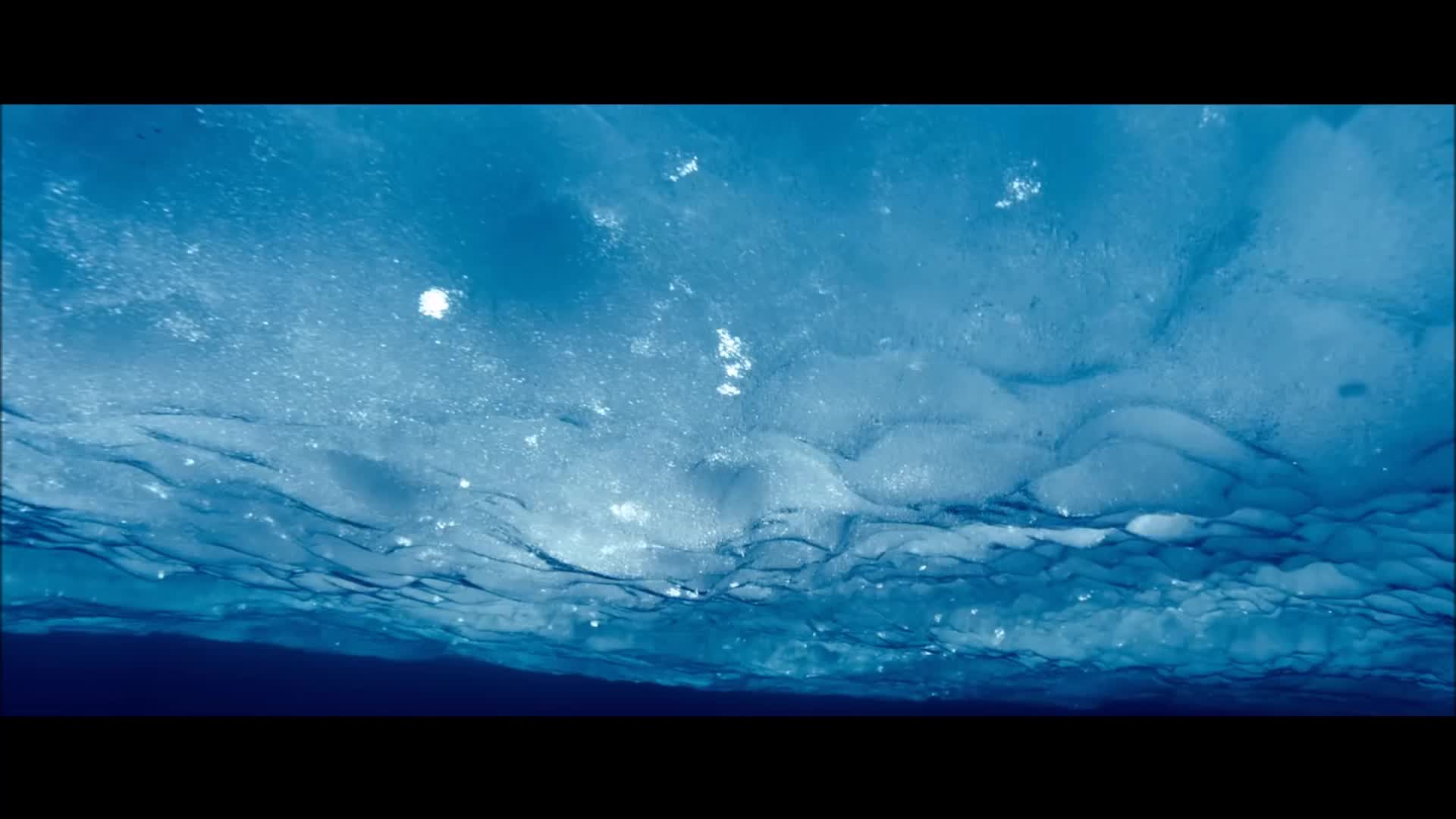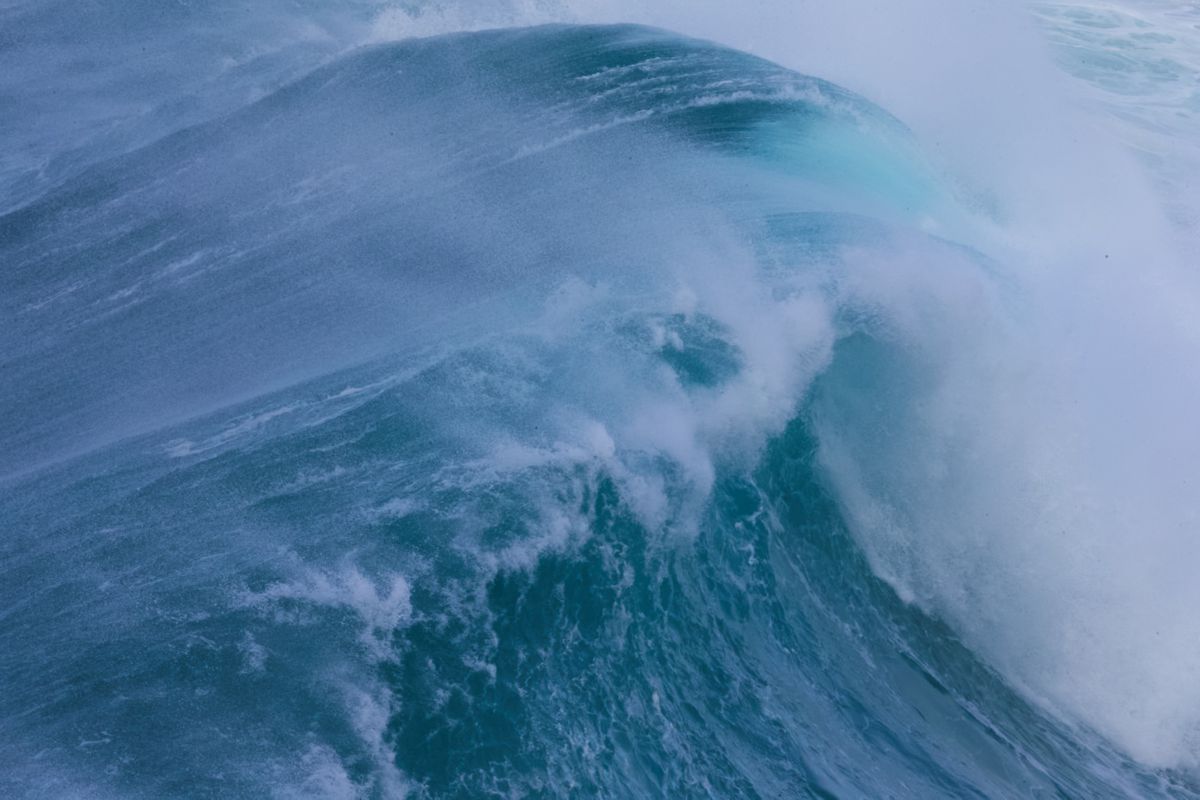DIRECTED BY: VICTOR KOSSAKOVSKY /2019

“The Ice was here, the ice was there, the ice was all around: It cracked and growled, and roared and howled, like noises in a swound” -Samuel Taylor Coleridge, The Rime of the Ancient Mariner
As Victor Kossakovsky’s ambitious documentary Aquarela opens, we are greeted with giant sheets of ice, a spinning camera, and heavy metal guitar riffs pounding the Dolby Atmos Theater. This film is a look at the beauty, and the dangerous nature, of the substance that covers the majority of the Earth’s surface: water.
Like the above section of Samuel Taylor Coleridge’s classic poem, The Rime of the Ancient Mariner, Aquarela captures both the sights and sounds of water, beginning with the frozen waters lurking under the ice of Russia’s Lake Baikal where the Spring is slowly bursting forth and the ice that covered the lake is beginning to melt and grow thin. Cars continue to drive on it without realizing that it is no longer safe to do so. A rescue crew quickly goes around trying to pull cars out of the watery depths once the vehicle has fallen through the ice. The camera, however is capturing the roars, and growls that the ice makes as the crew races to save an individual trapped in a car under the water. Kossakovsky’s camera crew sadly captures this death before moving the camera’s gaze to the giant mountains of ice and the precarious ship sailing below them as the giant sheets of ice come crashing into the water.

Like Gianfranco Rosi’s documentary, Boatman, there is very little dialogue in Aquarela. There is not an explicitly expressed narrative thread. The scenes are long shots that beautifully capture the awesome dangers of our everyday world, but these shots are not edited together to tell a specific story. The subject is water, and Kossakovsky wants to baptize you in it. Also like Boatman, Aquarela‘s cinematography will immerse you into this world as it simply captures what is, without making any statements on its subject matter.
Besides being a visual feast for the eyes, and begging to be seen on the largest screens possible, Aquarela presents its subject matter with some truly amazing vantage points. From under the massive rolling sheets of ice in the frozen waters, to being perched atop a sailboat experiencing a violent storm at sea, the breathtaking Angel Falls in Venezuela, to simply rolling down the streets of Miami, Florida during Hurricane Irma, Aquarela lets the power of each view of water speak for itself.

The sounds of nature, and of the water and ice themselves are the primary soundtrack, but as the waves swell, and the tempest rages, composer Eicca Toppinen’s metal-induced score rises and matches the power of the visuals that are pitching back and forth on the screen. Having come from a Finnish cello-metal band called Apocalyptica, Toppinen merges both the beauty of the string instruments and the ferocity of the metal genre into a perfectly matched symphony of destruction that truly reflects Viktor Kossakovsky’s visual vision.
As beautiful and powerful as the images are, however, this is a film whose vision far exceeds its grasp. It demands to be seen on the scale of an IMAX screen, and with its sound being pushed through the speaker system with all that the Dolby Atmos system has to offer. It is, though, a documentary film on a singular subject with very little dialogue, and these types of films will not be able to vie for many screens such as these that are gobbled up by every tent-pole film with their eye-popping CGI-effects experience. Aquarela might provide its own unique form of a sensory-overload experience, but it just won’t compete with the box office appeal of big blockbuster style films. It longs to be seen on the grandest of scales but it is filmed in a genre type that will find only a minimal of audiences. Therefore, if this type of documentary appeals to you, it would be best to see it as soon as possible as this film has been opening across different markets week by week, and disappearing from them nearly as quickly.

“Water, Water, everywhere….nor any drop to drink” – Coleridge, Rime of the Ancient Mariner
As much water as there is on screen in Aquarela‘s 1 hour and 29 minute run-time, it may end up leaving you a little thirsty for something more. This will be a very divisive film for most audiences who will be divided along the lines of whether the sound and visuals truly impacted them in a way that they consider the powerful force of nature water is, in all of its untamable forms, or if they, like the classic Ancient Marinar, find themselves unsatisfied by the very thing that surrounds them on every side: water.


